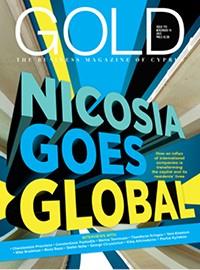“The success of eTranslation has been a pivotal moment in enabling us to harness our expertise in big data and large language models to explore and develop AI-based multilingual services across several areas,” Christos Ellinides, the Director-General of the European Commission’s Directorate General for Translation (DGT) notes.
In an interview with CBN, he continued, “We have since then rolled out a range of services that are not only used by all EU institutions but also benefit national administrations, universities, SMEs, and NGOs.”
Among other things, Ellinides also talked about two additional services, WebText and Accessible Text, which were launched in March, and come to supplement a series of other useful tools.
As Director-General of the European Commission’s Directorate General for Translation (DGT), can you tell us more about some of the most exciting recent tech tools related to your area of expertise?
DGT is the largest public organisation providing translation services and is firmly committed to adopting cutting-edge technological innovations that continuously transform our professional environment. In recent years, we have seen a profound shift, with new tools greatly enhancing both the speed and quality of our work, while offering strong support to our language professionals in their daily work.
One of the most exciting developments has been the integration of neural machine translation (NMT), in early 2018. It has not only significantly improved the quality of automated translations, but it lay ground for DGT’s further work on language data and language models. DGT used the NMT technology for its eTranslation tool to offer more contextually accurate translations, making them much more reliable for our multilingual needs. The success of eTranslation has been a pivotal moment in enabling us to harness our expertise in big data and large language models to explore and develop AI-based multilingual services across several areas.
We have since then rolled out a range of services that are not only used by all EU institutions but also benefit national administrations, universities, SMEs, and NGOs.
These include, among others:
- eSummary, an AI-driven tool for summarizing large volumes of text, which handled 27,000 requests last year
- eBriefing, designed to assist policy drafters in producing briefing notes from various input documents, serving 15,000 requests last year
- Speech-to-text, a transcription service that converts audio and video files into high-quality written text, with 14,000 requests processed last year
- eReply, a tool aimed at assisting in the preparation of responses to correspondence, queries, and similar requests, and of course
- eTranslation, which processed over 750 million requests last year!
Just last month, we launched two additional services:
- WebText, a tool that simplifies language and restructures text following web writing principles, ensuring clarity by avoiding jargon, using bullet points, and eliminating redundant information, and
- Accessible Text, an AI-powered tool designed to improve text accessibility for people with cognitive disabilities. It rewrites content using short sentences, avoiding abbreviations and complex vocabulary, making it easier to read.
We also developed AI services for businesses that want to reach global audiences with their websites, blogs or online stores. With an easy-to-use tool (Web-T) website owners and digital creators can effortlessly translate their content into over 24 languages, completely free of charge.
Through our ‘AI-based multilingual Services’ portal people can access all these powerful tools developed under the Digital Europe Programme and designed to break language barriers with one click.
These innovations reflect the ongoing commitment of our President, Ursula von der Leyen, towards a vision where we want AI to take us, as society and as humanity by:
- enhancing multilingual communication and ensuring that AI services are more accessible by all
- strengthening Europe’s digital sovereignty
- establishing Europe’s technological decoupling from the East and West, and
- ensuring Europe’s technological independence.
To what extent was human translating expertise used to create these tools?
The expertise of our translators has been crucial to the development of these tools. In 1995, a small innovation at DGT set the stage for a transformation we could never have anticipated at the time.
That was the year we created our own data repository, codenamed ‘Euramis’ (EURopean Advanced Multilingual Information System). Initially developed as a reference database for our staff, Euramis gradually became the backbone of our work in the era of computer-assisted translation. To this day, it continues to play a central role in our operations. Euramis has since evolved into a vast repository of high-quality data, meticulously checked, filtered, quality-controlled, and curated by professional linguists across all 24 official EU languages.
To give you an idea of its scale, in the past 25 years, Euramis has accumulated over 2 billion sentences and is now growing at a rate of 300,000 sentences per day. As the potential of big data became increasingly apparent, we recognized that Euramis was our gateway to a whole new world of possibilities and development of large language models.
All of our AI-based tools are developed by a team of prompt engineers, IT experts and computational linguists with deep linguistic expertise and a wealth of experience in AI algorithms. Each one of these tools is powered by the high-quality data produced by our translators. However, while these tools help accelerate repetitive tasks, one thing remains certain: no matter how advanced our tools become or how AI evolves, the contributions of real people will always be essential.
Who are the tools aimed at?
These tools are available not only to the staff of EU institutions, but – thanks to the Digital Europe Programme - are offered free of charge to public administrations, small and medium-sized enterprises, academic institutions, non-governmental organizations, and Digital Europe Programme projects based in the European Union or in countries affiliated with the DIGITAL Programme Strategic Objective funding this initiative.
Eligible users can register for access here.
How do you believe these tools will be further expanded in the coming years, for example will additional languages be added and/or will they be made available to more entities?
In the coming years, we expect the AI-based tools of the European Commission to continue evolving and expanding. In principle, our multilingual services and tools function in EU’s official languages and we remain committed to ensuring fair and equal treatment of all these languages. That is why the inclusion of additional languages will largely depend on the progress made by countries that are candidates for EU accession. However, one of the key challenges we face is gathering and accumulating linguistic data, not only for widely spoken languages like English and French but, especially for under-resourced languages such as Maltese, Danish, Slovenian, and, to some extent, Greek.
These days, we are focused on improving the accuracy, usability, and efficiency of our tools and services. As AI and machine learning technologies advance, we expect even more sophisticated functionalities, such as improved context-aware translations and enhanced AI-assisted writing tools, which will be able to meet a broader range of professional but also personal needs.
Ultimately, our goal is to continue innovating while ensuring that our tools remain accessible, user-friendly, and adaptable to the evolving demands of a multilingual and interconnected Europe.
Ellinides will be speaking at a workshop entitled 'Language Data for Language Technology and AI Development' taking place in Nicosia on Thursday, 8 May. The event is organised by Language Data Space Workshop in Cyprus and the University of Cyprus' Department of French and European Studies.









